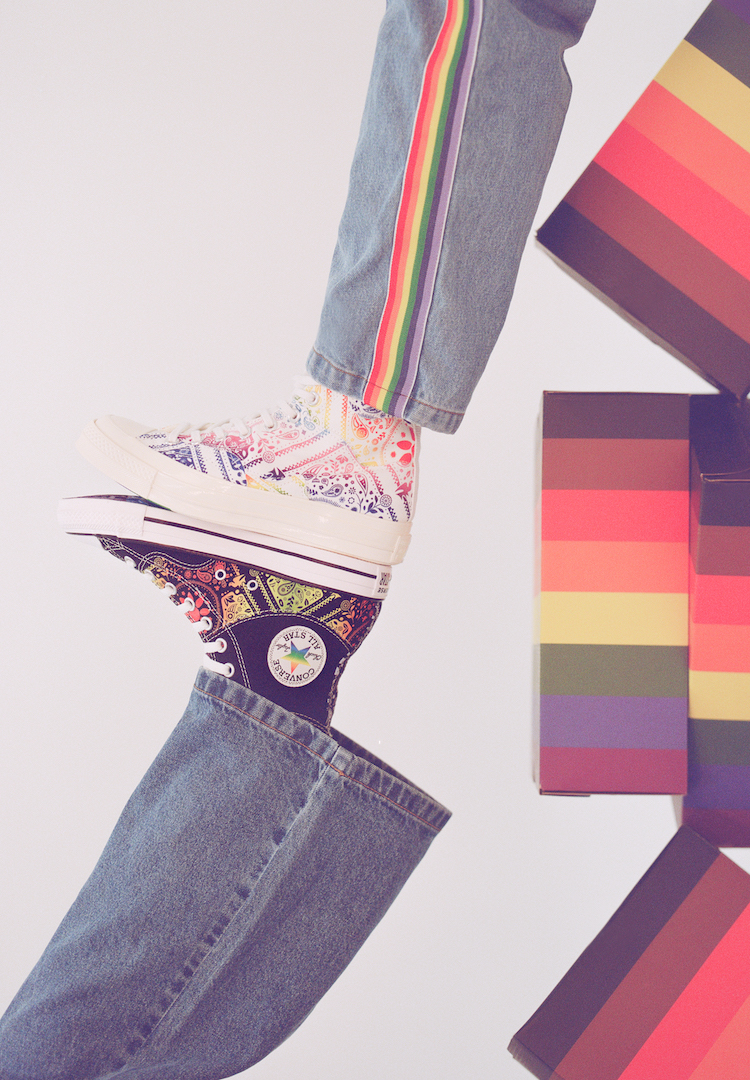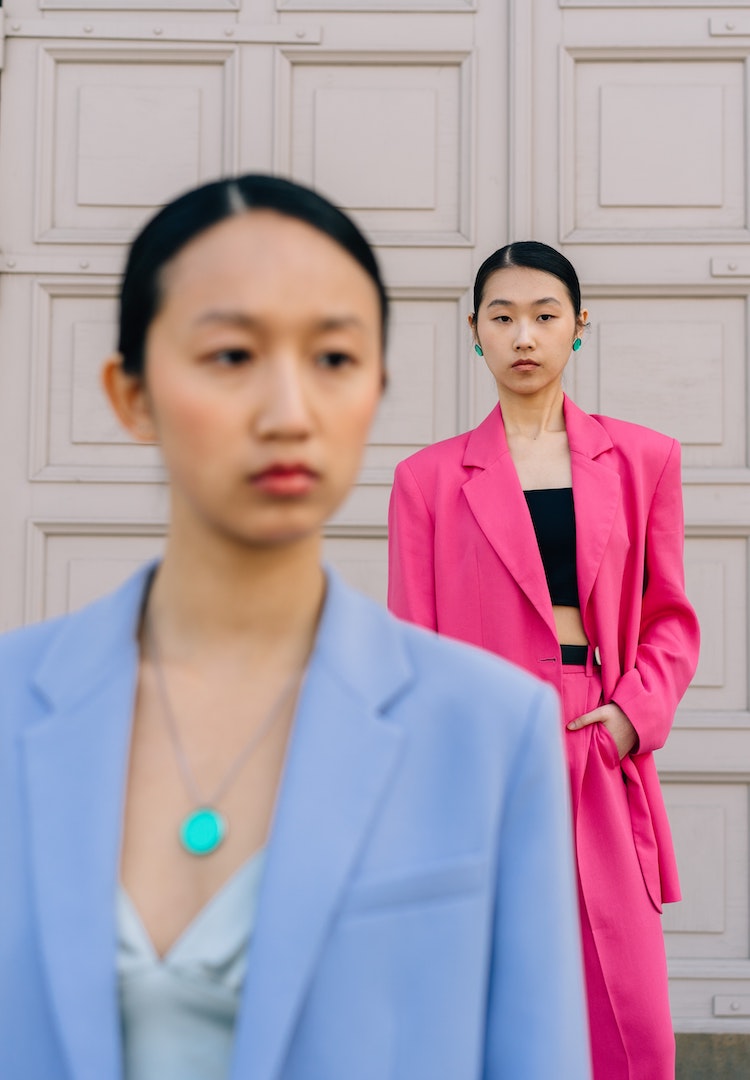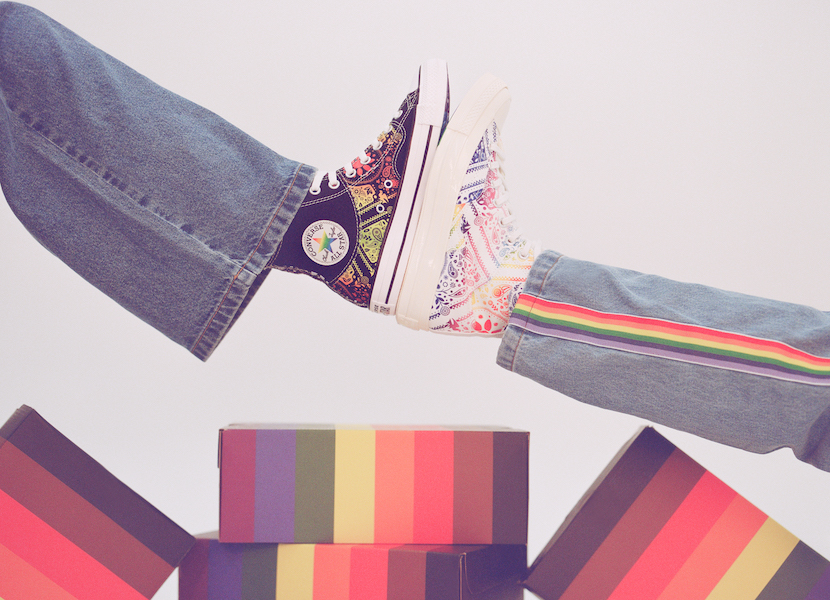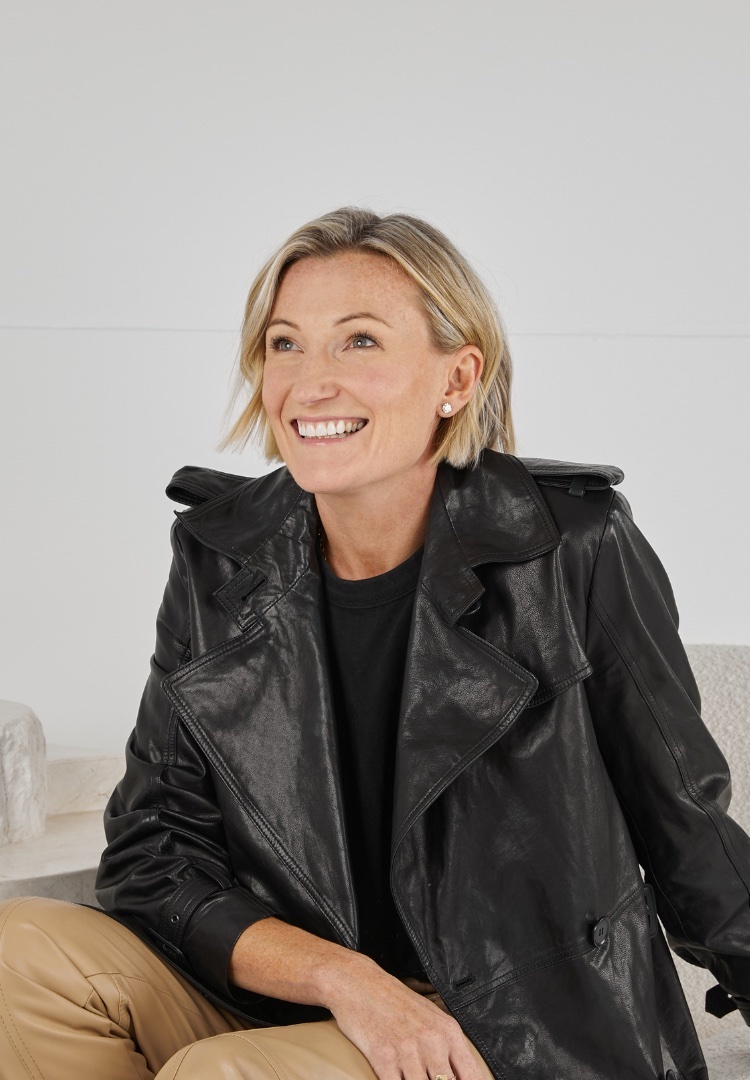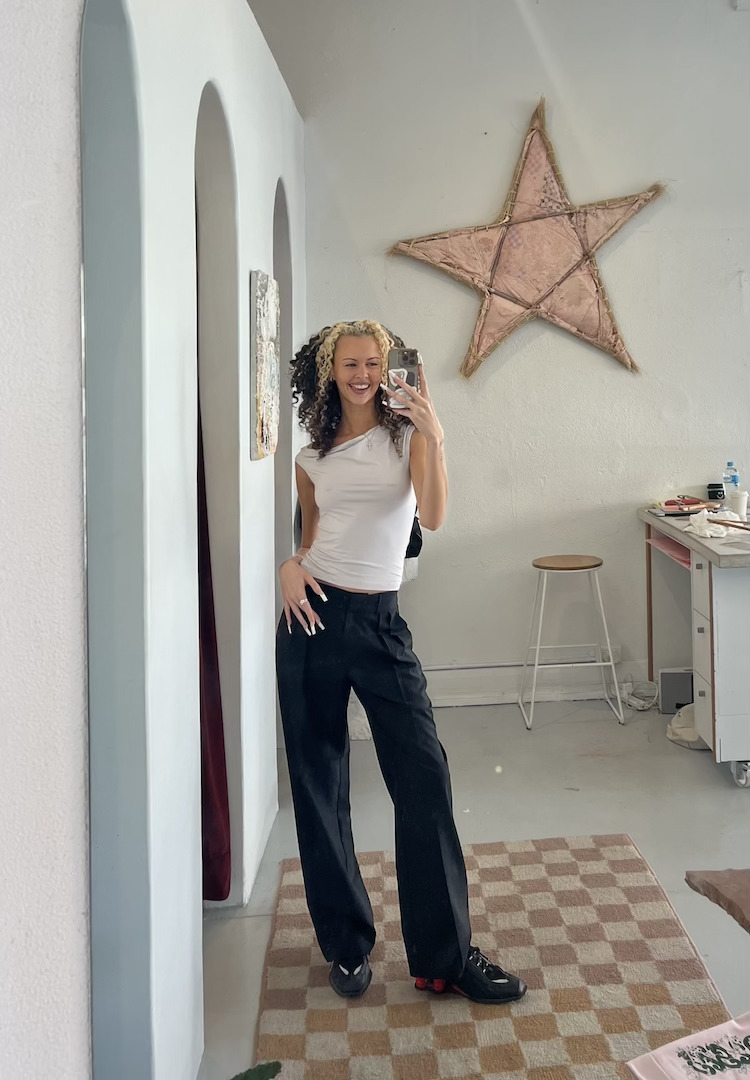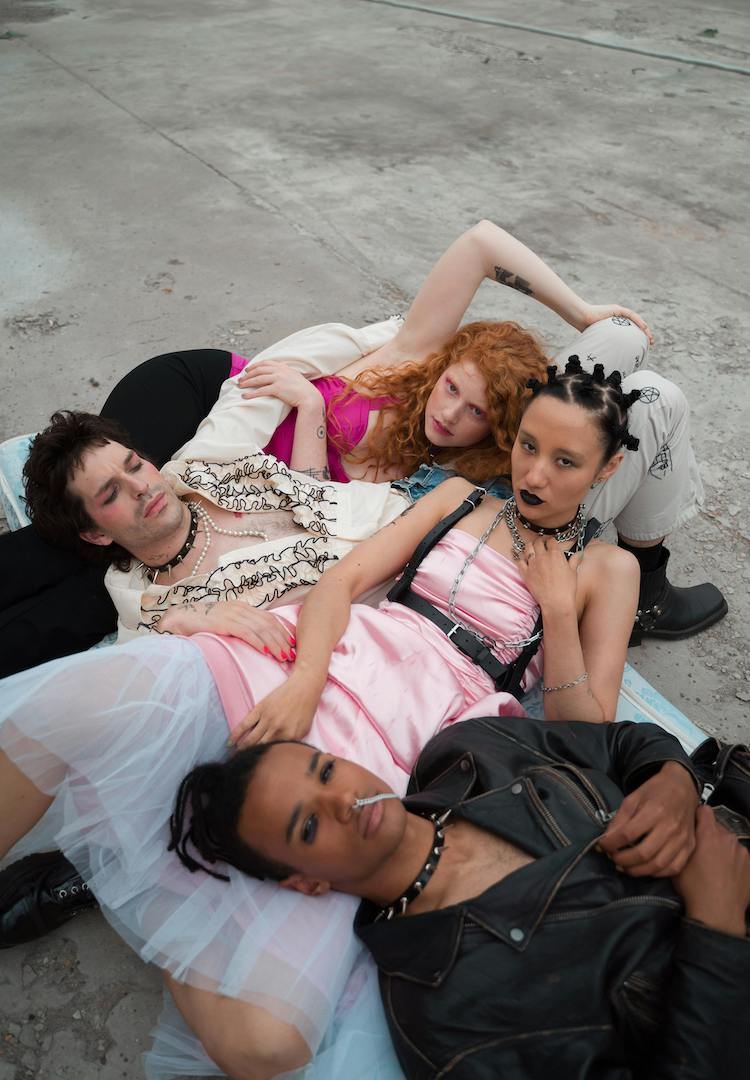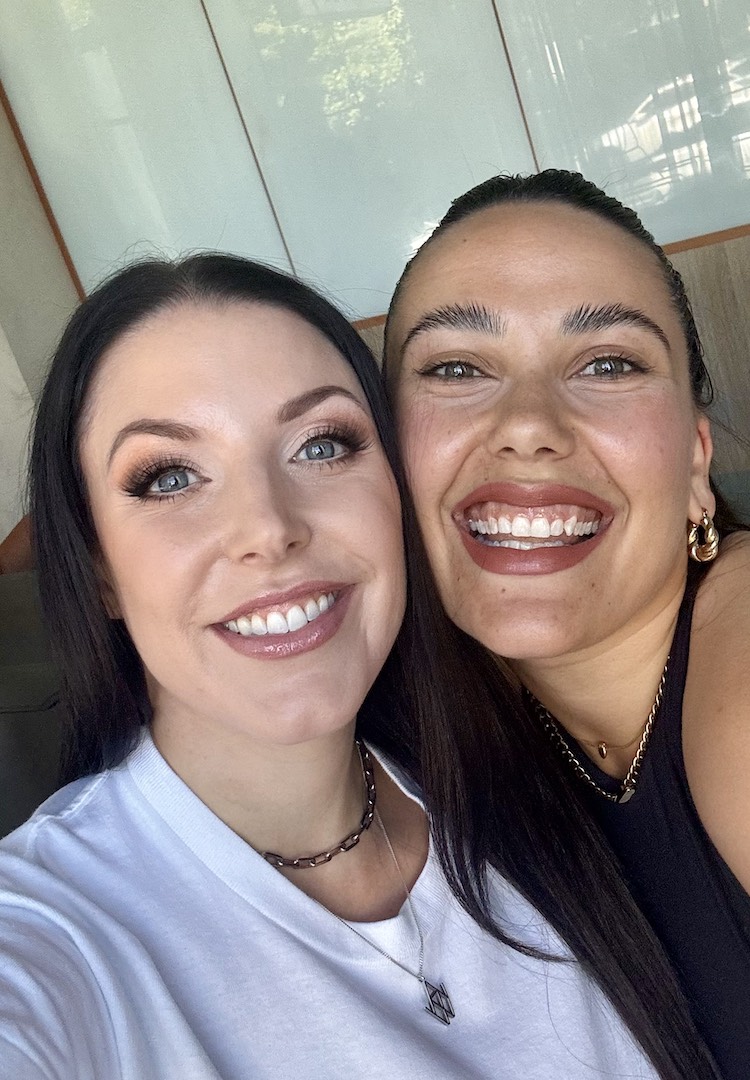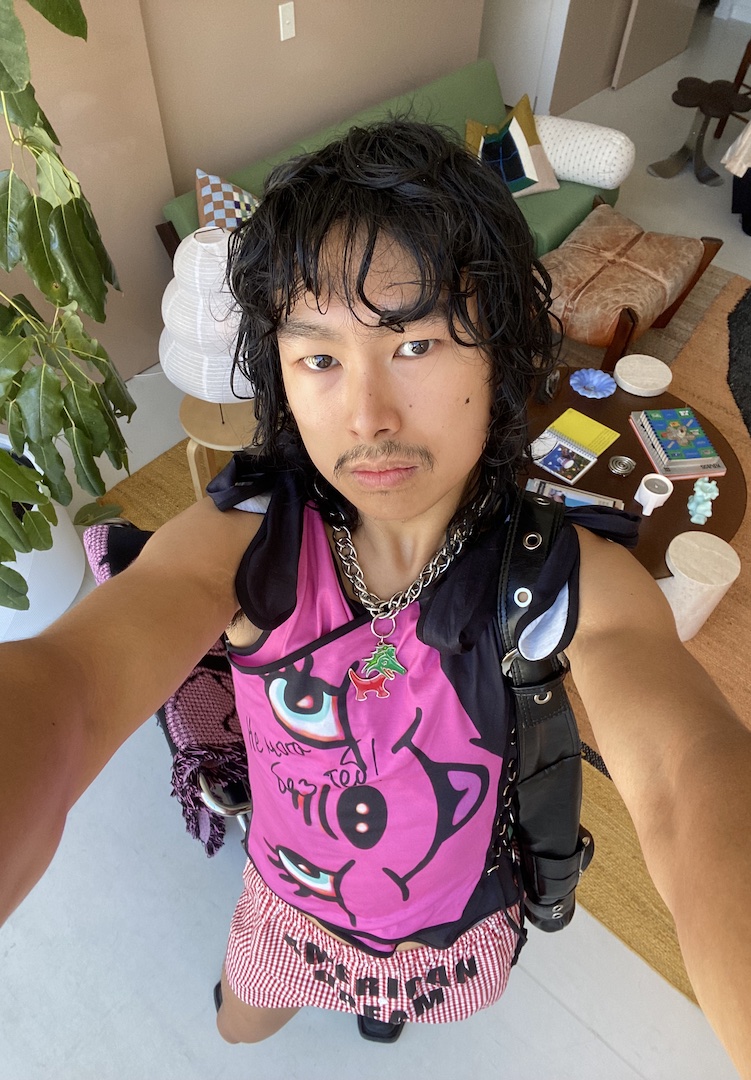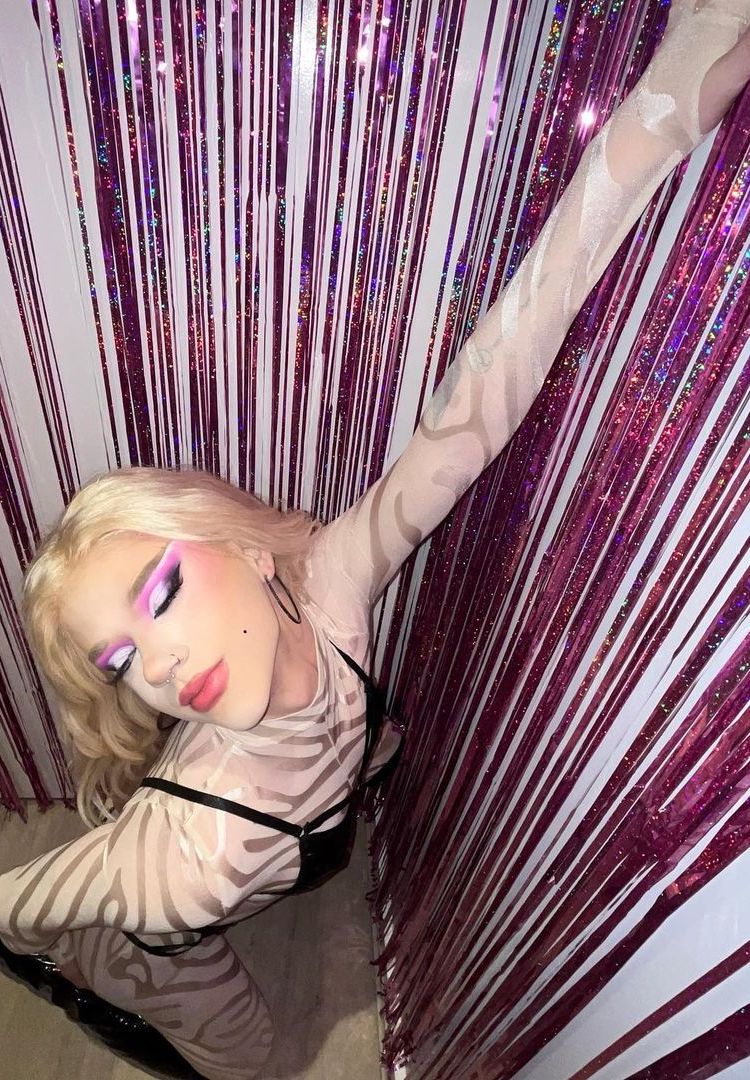If we want to celebrate Pride, we need to call out racism
IN PARTNERSHIP WITH CONVERSE
PHOTOGRAPHY BY ISABELLA CONNELLEY
STYLING BY CARLOS MANGUBAT
WORDS BY RIMU BHOOI
“As non-Black people, we are responsible for fighting anti-Blackness and white supremacy alongside queerphobia. None of us is free until the last Black trans sex worker is free.”
Content warning: Discussion of anti-Blackness and white supremacy.
This Pride Month, in partnership with Converse, Fashion Journal is welcoming a queer guest editor from the Converse All Star community to guide our storytelling in support of queer voices. Rimu Bhooi is a queer, non-binary, disabled Indian of Punjabi Sikh descent, working as a writer, board member, creative, and an activist for human rights and the most marginalised communities. This article was written and edited by Rimu in consultation with the Fashion Journal team.
Pride exists because of a Black trans woman who was a sex worker that threw a brick at a cop and started a riot against the state. To be true to the roots of pride, we must support queer* people of colour, trans women, and queer sex workers.
The theory of ‘intersectionality’ was created by Kimberlé Crenshaw in her 1989 paper. As a Black woman, Crenshaw’s paper was influenced by Black feminist theory. Crenshaw argues that we cannot understand the experiences of Black women by examining Blackness and womanhood separately.
For more content like this, browse through our Life section.
Instead, her paper explains that only through examining these identities cohesively and exploring the interactions between the two can we begin to understand the experiences of Black women truly. Intersectionality is now a widely used concept, and it explains the layers of oppression that affect a person’s experience.
I myself sit at a variety of intersections. I’m Indian. I’m a Punjabi Sikh. I’m trans, non-binary. I’m queer. I present my gender as quite feminine. I use mobility aids. I have invisible illnesses. I went to a public Indian English-speaking school. My grandparents were refugees. I have a New Zealand passport.
I spent my childhood on a farm, among many ethnicities, languages, dialects, religions, and cultures. I got my light skin from my New Zealand European mother. I live in an urban centre in Aotearoa, New Zealand. I rent a home, access free public healthcare and live paycheck to paycheck. I’m in a relationship with a woman. I have a tertiary education.
Some of these factors give me a great deal of privilege, like having a New Zealand passport and a tertiary education. But, on the other hand, some hinder access for me, like being queer and a disabled person who uses mobility aids.
Here lies the crux of the problem. Being a member of marginalised communities doesn’t mean I have special privileges that allow me access to Black communities and/or Black rainbow communities. On the contrary, the layers of privilege that I have mean that it is totally inappropriate for me, as a non-Black person, to utilise features of African American culture like African American Vernacular English (AAVE).
Of course, there are layers of inter-personal discrimination and systemic oppression that exist upon me as well. I feel a great deal of solidarity for all marginalised communities because I am a marginalised person on many fronts.
Nonetheless, I have to reiterate that this doesn’t allow me to barge into spaces or cultures that are not for me. It’s a lesson I am constantly confronted with as I make mistakes and screw up.
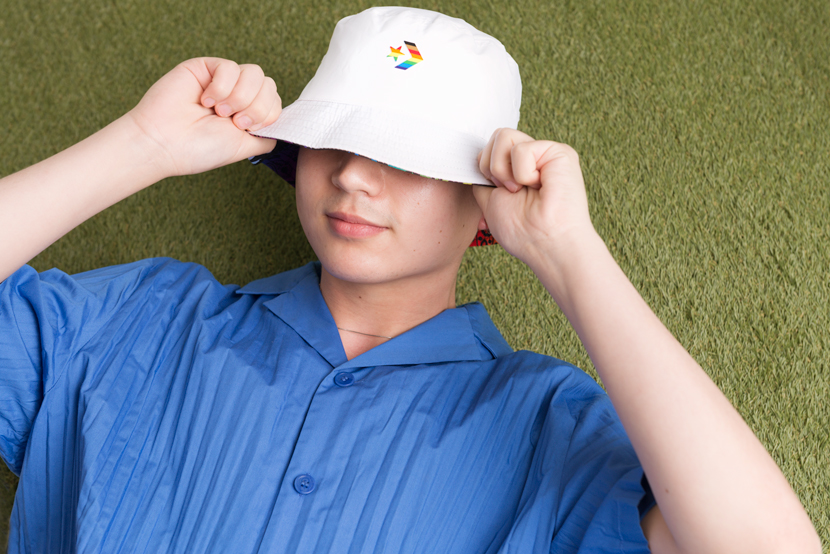
We should recognise that modern queer culture, Gen Z culture, TikTok culture, online culture – whatever name we give it – steals its vocabulary, phrases and grammar from AAVE. As a polyglot (someone who knows and can use several languages) I began to compare my own experience of language. How would I feel about a White person or even someone who had no link to India using Indian English?
How would I feel about someone impersonating my aunt or sister to feel a closeness to myself or people like me? How absurd. Do my classmates, friends, and peers, as non-Black people, feel absurd using AAVE?
Black educators shouldn’t have to spend time educating us and pointing out the obvious, but they are so often made to do so, because things don’t change quickly enough when we leave anti-racism up to those who benefit from Whiteness. White people benefit hugely from the discrimination and oppression of Black people.
When privileged White LGBTQ+ people don’t hold themselves accountable for changing the problematic norms in their communities, anti-Blackness flourishes. The misuse of AAVE is only part of this; digital Blackface, essentially modern-day minstrelsy, is another, as is Blackfishing.
I often come across famous queer people online who imitate Black women in their clothing, accessories, and body language. I’ve noticed that with drag shows growing in popularity, more of us have become fans of drag culture.
Drag is an incredible and awe-inspiring art form, and it is an integral aspect of queer culture. However, drag, as we know it today is intrinsically linked to African American culture and Blackness. We do our Black peers a disservice when we forget this.
When non-Black people angrily scream at the camera, gesturing with their long artificial nails, wearing sewn-in wigs, and misusing random words from AAVE, they contribute to anti-Blackness. Whether on purpose or obliviously, they are imitating Black women.
Back in 2020, Fashion Journal contributor Jasmine Wallis explored the impact celebrities have on the normalisation of blackfishing. Wallis wrote about the Kardashian-Jenner empire basing their business on the appropriation of socially desirable aspects of Black culture.
Recently, Kim Kardashian herself appears to have dropped some of these aspects, just as easily as they were picked up. It’s difficult to find any relevant sources on the matter which aren’t rooted in body-shaming and European beauty standards, which is a whole other issue that needs to be explored.
We’re all familiar with specific styles becoming fashionable thanks to celebrities wearing them, but as writer Whitney Alese explains, when this extends to people, “they have turned Blackness into currency, no different than slave owners selling people as property”
The financial opportunities that Black women are systemically denied seem to be freely handed out to non-Black people who make caricatures of them. But Black women aren’t only financially oppressed; they are being murdered, particularly Black trans women.
Pride is a time of celebration and an opportunity for rainbow communities to be at the forefront of our minds. But it’s also a time for grieving, where we acknowledge and lament the loss of our peers.
We grieve for all that has been taken from rainbow communities. We mourn our Indigenous histories, the loved ones lost to conversion therapy, suicide, murder and the young people left to survive on the streets.
When non-Black queer people celebrate pride, as we should, we have to remember the origin of pride as we know it. Marsha P Johnson, a Black trans woman who was a sex worker, threw a brick at a cop and started a riot against the state.
Today, Black trans women who are sex workers are still criminalised for existing, as are Black women and Black LGBTQ+ women. Yet, non-Black people still pick and select parts of Black culture and history for their own gain.
Non-Black rainbow communities are no exception. As non-Black people, we are just as responsible for fighting anti-Blackness and white supremacy alongside queerphobia as cis-gendered heterosexual people. None of us is free until the last Black trans sex worker is free.
*This writer uses rainbow and queer interchangeably as umbrella terms that embrace any person whose sexual orientation, gender identity or expression, or sex characteristics differs from the majority binary (female/male) norms. This includes lesbian, gay, bisexual, trans, takatāpui, intersex, LGBTQIA+ and other culturally specific terms such as sistergirl, brotherboy and fa’afafine. They acknowledge that these terms might not work for everyone.
Rimu Bhooi is a queer, non-binary, disabled Indian of Punjabi Sikh descent. They live on the whenua of Ngāti Toa, Te Āti Awa, and Taranaki Whānui ki te Upoko o te Ika a Maui. Rimu lives with endometriosis and the many comorbidities that come with the condition. Working as a writer, board member and creative, they are an activist for human rights and the most marginalised communities. This Pride month, they are the Guest Editor of Fashion Journal, made possible by Converse.
FJ readers can explore dozens of stories from the Converse queer community online at the Converse.Gallery and shop the brand’s Pride capsule collection here.
Styling credits
LOOK ONE (L – R)
COTTON ON JEANS, CONVERSE CHUCK TAYLOR ALL STAR PRIDE HIGH TOP IN BLACK, DANGERFIELD JEANS, CONVERSE CHUCK 70 PRIDE HIGH TOP IN WHITE
LOOK TWO
SHEN WEARS COS SHIRT, CONVERSE PRIDE BANDANA REVERSIBLE BUCKET HAT, STYLIST’S OWN JEWELLERY


